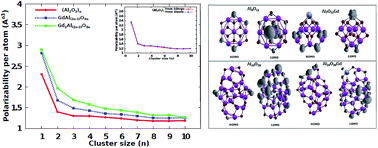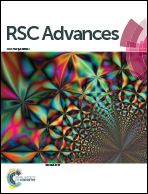Time dependent DFT investigation of the optical response in pristine and Gd doped Al2O3
Abstract
The optical absorption spectra and static polarizabilities for the lowest energy configurations of Al2O3 and Gd doped (Al2O3)n clusters (n = 1–10) are investigated based on the time-dependent density functional theory (TDDFT) formalism. The polarizabilities of (Al2O3)n, GdAl2n−1O3n, and Gd2Al2n−2O3n clusters decrease with the increase in size (n) of the cluster. On the other hand, the polarizability of the pristine system increases with the Gd concentration. A systematic study of the optical band gap and HOMO–LUMO gap change for different cluster sizes and Gd concentrations has been envisaged. This could be quite useful from the application perspective of band gap tuning with respect to the cluster size. The study reveals the dependence of both the optical gap and the optical spectra on the geometry, size of the cluster and number of Gd atoms. It is observed that the optical gap oscillates with an increase in the cluster size. With an increase in the number of Gd atoms, a red shift is observed in the optical spectra compared to the pristine system. Interestingly, smooth transitions from discrete to quasi-continuous optical spectra have also been predicted with an increase in size. The simulated spectra exhibit long absorption tails extending deep into the region of lower transition energies.


 Please wait while we load your content...
Please wait while we load your content...